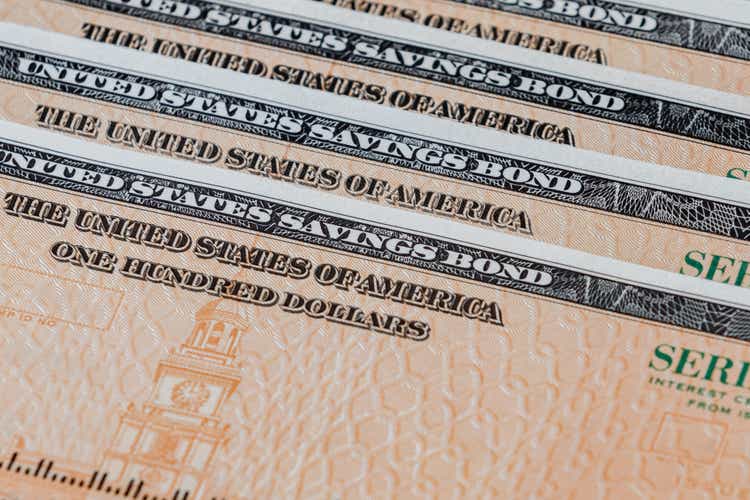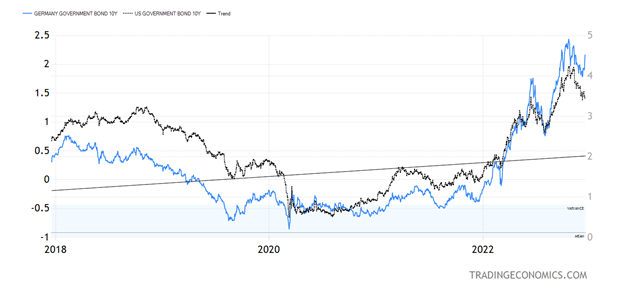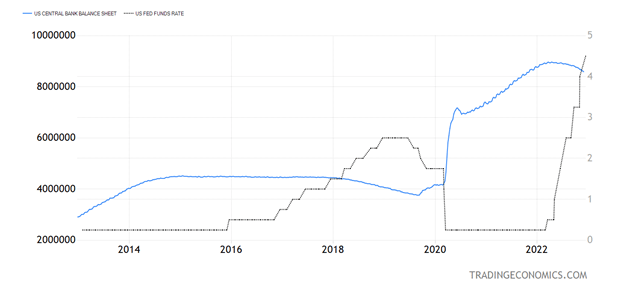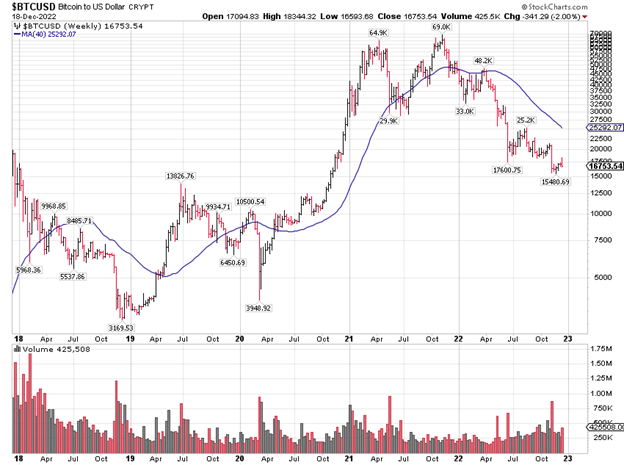JJ Gouin
While the U.S. stock market reacts quickly to the message of the Fed Chair (essentially “higher rates for longer”), the Treasury market does not seem to believe Jerome Powell. The bump in the terminal rate to 5.1%, as per the consensus dot plots in the last FOMC meeting, was not accompanied by a similar sell-off in the Fed funds futures that would reflect a higher terminal Fed funds rate being priced in.
To be fair, “higher for longer” is not just a Fed phenomenon. The ECB and the BOE also talk the same game plan, but with the big difference being that there was a significant spike in German bund yields and other euro-denominated government bonds last week as ECB President Christine Lagarde concluded that markets are underpricing how high interest rates need to go in order to reverse EU inflation.
Meanwhile, there was no such move in Treasury yields.
Trading Economics
Graphs are for illustrative and discussion purposes only. Please read important disclosures at the end of this commentary.
Some people say the Treasury market is forecasting a recession. That could be true, even though some EU countries are already in a recession and their yields are spiking as per ECB policy. Others say that the Treasury market is forecasting a precipitous decline in inflation that would make the Fed alter its mind on the high terminal Fed funds rate, that is, the Fed won’t have to hike as much with a sharp drop in inflation.
As mentioned here last week, M2 money supply growth is about to turn negative for the first time in history (on a year-over-year basis). If the Fed wanted Treasury yields higher, they can always up the pace of quantitative tightening, which is currently running at a rate of $95 billion per month. That can only be described as the “nuclear option,” as the Fed can simply flood the market with Treasuries.
Trading Economics
Graphs are for illustrative and discussion purposes only. Please read important disclosures at the end of this commentary.
Be that as it may, it does strike me as odd that Powell is making too many mistakes for a man in his position. He has already overstimulated to the upside in 2021, and now he is overtightening to the downside. (Central banks typically have a countercyclical role, but he is doing exactly the opposite.)
What Happens if Another Crypto Exchange Fails?
FTX (FTT-USD) has now failed. “Plain, old-fashioned embezzlement” is how the new FTX CEO described the actions of his predecessor in his congressional testimony last week. We don’t know where the money is, but my guess is that a lot of it is simply lost, due to the leverage involved and the speed of the unraveling.
At one point in 2020, some participants were trading crypto on 100:1 leverage, although over the past year, that leverage ratio is reported to have come down to 20:1.
StockCharts.com
Graphs are for illustrative and discussion purposes only. Please read important disclosures at the end of this commentary.
Leverage of 20:1 or even 10:1 is no joke. Bitcoin (BTC-USD) had been closely correlated with the Nasdaq 100 (NDX) and, given how much Nasdaq has declined this year (down over 31% through last Friday), it is similar to be long NDX futures in a bear market. In other words, don’t do this at home.
Should something happen to Binance (BNB-USD), though – and its CEO sure gave evasive answers in his CNBC interview last week – the floodgates will surely open. I fully expect that before this crypto bear market is over, bitcoin will fall below $10,000, and I would not be surprised if it hits its pandemic low near $3,900.
All content above represents the opinion of Ivan Martchev of Navellier & Associates, Inc.
Disclosure: *Navellier may hold securities in one or more investment strategies offered to its clients.
Disclaimer: Please click here for important disclosures located in the “About” section of the Navellier & Associates profile that accompany this article.
Editor’s Note: The summary bullets for this article were chosen by Seeking Alpha editors.


Be the first to comment